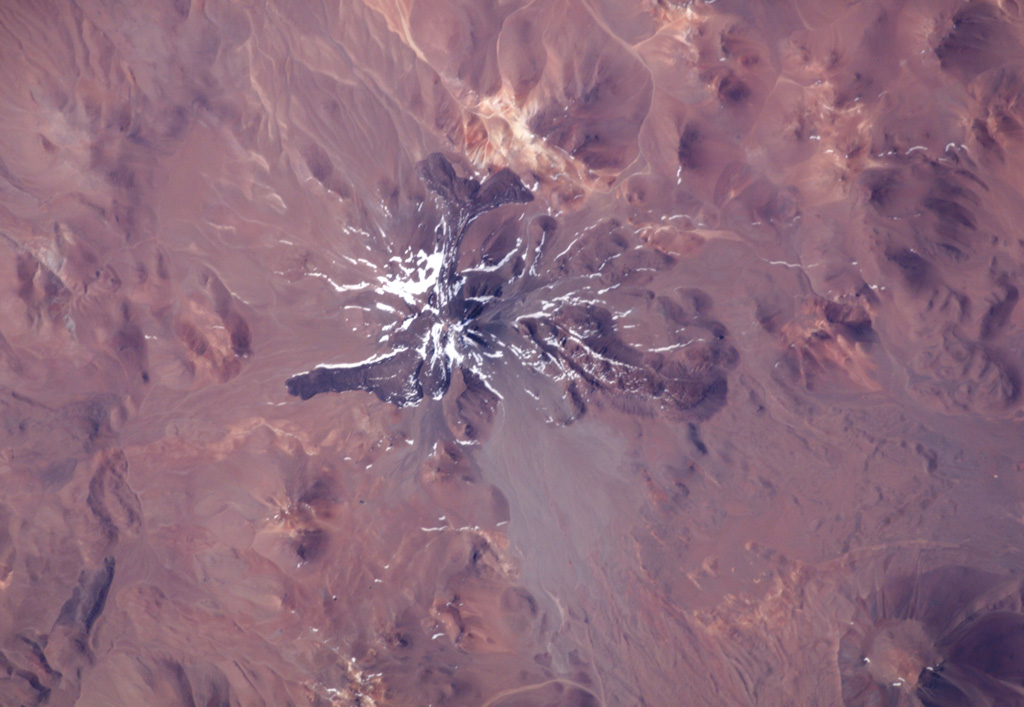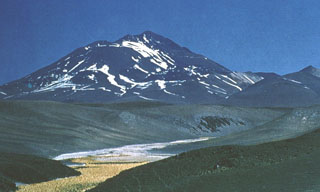Image GVP-11444

The world's highest historically active volcano, Llullaillaco, sits astride the Chile-Argentina border in this NASA International Space Station image (with north to the upper right). A well-preserved summit cone was the source of prominent lava flows that are older than they appear in this image. The hilly terrain at the lower right was produced by a major debris avalanche about 150,000 years ago that swept eastward into Argentina and diverges around the north and south sides of the older Cerro Rosado stratovolcano (extreme lower right).
NASA International Space Station image ISS006-E-13814, 2003 (http://eol.jsc.nasa.gov/).
![]() This image is made available as a Public Domain Work, but proper attribution is appreciated.
This image is made available as a Public Domain Work, but proper attribution is appreciated.

Llullaillaco
